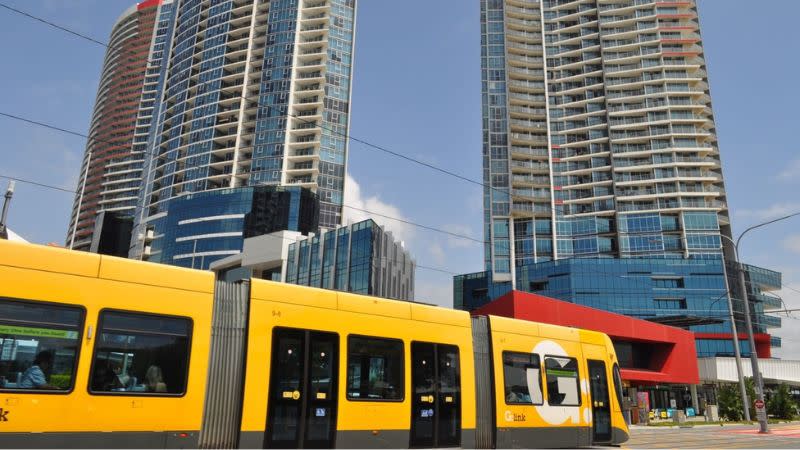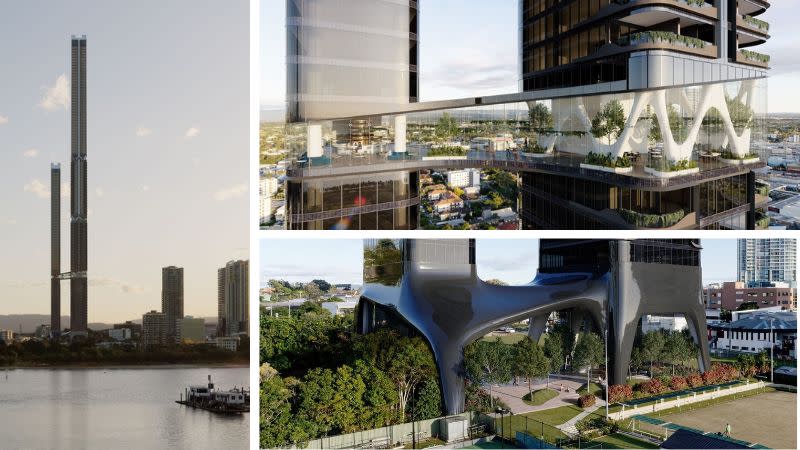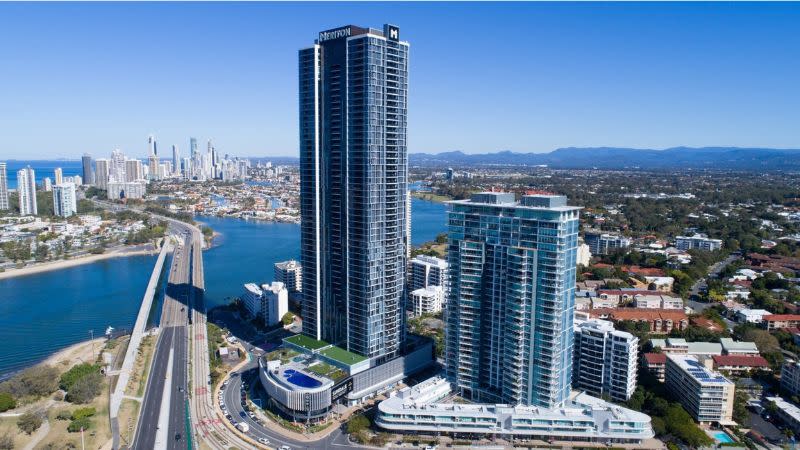Resources
Newsletter
Stay up to date and with the latest news, projects, deals and features.
Subscribe
The Southport CBD still may be—as one local property pundit puts it—the “sleeping giant of the Gold Coast market”.
But if all had gone to plan during the past decade it would already be wide awake.
In October, it will be 10 years since the Queensland government declared the Southport CBD and its surrounds a Priority Development Area.
Covering almost 200ha, the PDA was meant to establish Southport as the city’s “definitive centre for commerce” and be the catalyst for billions of dollars in projects through the cutting of red tape and fast-tracking of development approvals.
“This will be the ‘decade of Southport’,” a local politician enthused at the time.
And for a while it was a prophecy that seemed like it just may unfold.
CBRE Gold Coast senior director Tania Moore concedes even she had high hopes to start with.
“Significant delays through the town planning process were an obstacle for new business to come here,” she says. “And people were excited the PDA was going to be the catalyst for things to happen, whether that was residential or commercial development.”

Within 12 months of the PDA’s introduction, 29 development applications with a combined end value of at least $2 billion were filed with the Gold Coast City Council.
But few of the projects have been realised—and many of them likely never will be.
Instead of being a driving force for development, the PDA created the means for an opportunistic play to use the new planning instrument—and its unlimited building height—to gain maximised approvals for large-scale mixed-use developments and then capitalise on the uplift in property values by on-selling the sites.
“Some sites have traded, some haven’t … but realistically, no one has actually delivered on any of those DAs,” Moore says. “You can put like a gazillion apartments on some of them but no one’s ever probably going to build them.
“It was all about flicking them to someone else to deliver.”
Meanwhile, she says, land values have been pushed up so high—from $1000 or less per square metre pre-PDA to more than $2500 per square metre— that “it is no longer feasible to build an office building on land in Southport”.
The only major commercial addition has been Queen Street Village with some retail and medical space on the former Gold Coast Hospital site.
“Highest and best use is for residential at current land values … it’s not creating a commercial hub. It just doesn’t work,” Moore says.
In fact, the Southport CBD office market—now second in overall space to Robina-Varsity Lakes—has reduced in size by 12,352sq m since the PDA was declared, as older-style buildings have been removed from its stock.
Moore says, however, with most of its office assets more than 30 years old, Southport is the only precinct on the Gold Coast—one of the nation’s tightest office markets with 6.3 per cent vacancy—where there is potential for growth.
“But currently it just doesn’t make sense financially ... and a lot of those owners are not spending much money on their buildings because they see them as future development sites ”
As well, with a number of landowners sitting on large empty undeveloped sites throughout Southport, history is repeating itself on the Gold Coast. Down the road about 4km, abandoned so-called development “bomb sites” have been a blight on the Surfers Paradise landscape since the mid-1980s.
Rider Levett Bucknall Gold Coast director Jim Krebs says the other challenge with Southport is “trying to define exactly what that CBD looks like”.
“The Gold Coast has evolved from a more village-based scheme and it has continued to have fragmented areas of mixed use, commercial and residential.
“So, it's really about trying to find what that identity is and leveraging that combination of uses to help create a vibrancy,” Krebs says.
“The intent of creating a CBD is a challenge when you've got competing land interests. On the Gold Coast, residential generally still wins out as the highest and best use and it makes commercial harder to stack up.

“The Gold Coast has evolved from a more village-based scheme and it has continued to have fragmented areas of mixed use, commercial and residential.
“So, it's really about trying to find what that identity is and leveraging that combination of uses to help create a vibrancy,” Krebs says.
“The intent of creating a CBD is a challenge when you've got competing land interests. On the Gold Coast, residential generally still wins out as the highest and best use and it makes commercial harder to stack up.
“Certainly, Southport is a much stronger and more vibrant place than it was a decade ago. The PDA has probably enabled some projects to happen in a more streamlined way than would have otherwise been possible.
“But whether it has achieved the original intent that's probably questionable.”
Southport councillor Brooke Patterson says the PDA so far has failed to deliver on its promise.
“It’s devastating what has not happened in Southport during the past 10 years,” she says. “It’s a really extraordinary opportunity lost.
“In fact, [the PDA] has actually possibly done the opposite of what was intended … it incentivised landbanking.
“And government can take the blame for that as much as anyone. There was good intent but they hadn’t actually just worked through what needed to happen to incentivise the right kind of [development] behaviour.”
Patterson says her focus is now on the next 10 years with a review of the Southport PDA under way that will sharpen its ability to deliver on the original intent of creating “a dynamic and unique CBD with a high-quality urban environment”.
The revised PDA will be “much more rigorous and much tighter”, she says, with height limits potentially being reduced in some of its four precincts “so that it incentivises [development] behviour where we want it”.
Crucial to its success will be “gamechanger commitments” to key landholdings such as the long-dormant 1.5ha former Star of the Sea College site on Marine Parade. It was acquired in 2014 by Garuda GC—the Australian arm of China’s Huixin Real Estate Group—which had plans for a multi-tower residential and retail project.
“Those sites need to change hands and for someone to come and make a real commitment to do something quite spectacular,” Patterson says.
Emerging as a beacon of hope for the rise of the Southport CBD is the ambitious $400-million Park Lane “vertical neighbourhood” comprising two slender supertowers—a 100-storey apartment building and a 60-storey office building.
It is earmarked for a vacant 1245sq m site next to the Southport bowls and tennis clubs, and would deliver 193 apartments to be home to 580 people and 12,693sq m of office space to accommodate 500 workers.

Last week, the developers behind the proposal—a Melbourne consortium, including property group Baracon and funds manager Payton Group—were on the Gold Coast indicating they are pushing ahead with their plans after an access issue relating to adjoining state-owned land was resolved.
“They are committed,” Patterson says. “They’ve got the money and they are serious.
“And because it’s a very sensitive build—it’ll be a huge tower on a tiny block and something the Gold Coast really hasn’t seen before—they’ve just had so many issues to get to the starting line.
“The biggest hurdle for them now is will they get the tick from the council.
“But once people see a group like that come in and commit, it just shifts the way everybody sees the Southport CBD ... one or two of those and it’s going to be an a-ha moment.”
As well, Patterson says, the touted future relocation and centralisation of the Gold Coast City Council Chambers from Bundall to the Southport CBD is also still on the table.
By the end of 2024, a recommendation on the long-term strategic plan for staff accommodation will be brought before the council. The redevelopment of the Mal Burke Carpark, opposite the Southport Courthouse, into a local “tower of power” is one of the favoured options.
“We’ve got 4000 staff, so that will be another gamechanger for Southport,” she says.

Southport development and business identity John Howe agrees.
And he adds despite the challenge of “swathes” of land in Southport being under private ownership and controlled by overseas interests, there are also “massive amounts of government and council land, which could be utilised for the big flavours of the month—build-to-rent and student accommodation”.
“What it needs is for the council and the state government to get together, consolidate their sites and put together a big masterplan for the area,” says Howe, who heads up engineering advisory and project delivery firm iEDM.
“And the bones of that have started now with the review of the PDA.
“But we just need to focus on putting some economic drivers into the area.
“The Southport PDA was a great idea ... but the PDA we got wasn’t the PDA we wanted. It morphed into a planning instrument, which wasn’t required for Southport as you can basically build whatever density you want to and you always have been able to.
“So the PDA that’s required needs more of an economic development impetus to spur development on … not just getting approvals through quickly. Developers want surety and they want to know the proper economic outcomes to develop a property.”
Nonetheless, Howe says even with its faults, the original PDA declared back on October 4, 2013 was “not a negative”.
“Yeah, people have got some pretty wild plans going for big buildings and things like that …
“But, I mean, you’ve got unlimited height, unlimited density, you’ve got a light rail system, you’re next to hospitals, next to major schools and next to the water. Come on, it’s not hard really when you think about it.”
You are currently experiencing The Urban Developer Plus (TUD+), our premium membership for property professionals. Click here to learn more.
